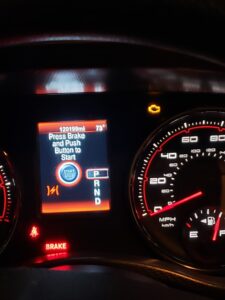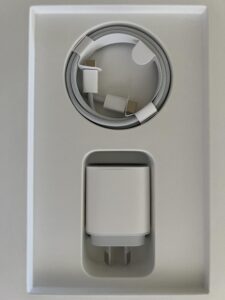Curious about how to tell if your AGM battery is in good shape? Look no further! In this article, we’ll share some practical tips for determining the health of your AGM battery. Whether you’re a seasoned battery enthusiast or a beginner, understanding the signs of a healthy AGM battery is crucial for maximizing its performance and lifespan. So, let’s dive right in and find out how to tell if your AGM battery is in top-notch condition.
How to Tell If Your AGM Battery Is Working Properly
Introduction
AGM (Absorbent Glass Mat) batteries are becoming increasingly popular in various applications, from automotive vehicles to marine vessels and renewable energy systems. These batteries provide several advantages over traditional flooded lead-acid batteries, including improved performance, longer lifespan, and maintenance-free operation.
However, like any battery, AGM batteries can experience issues over time. It’s important to be able to tell if your AGM battery is working properly to ensure optimal performance and avoid potential problems. In this guide, we will explore various indicators and methods to help you determine the condition of your AGM battery.
Understanding AGM Battery Basics
Before we delve into the indicators of a healthy AGM battery, it’s essential to understand a few key aspects of how AGM batteries work. AGM batteries consist of several components, including lead plates, an electrolyte solution, and a fiberglass matting that holds the electrolyte between the plates.
Unlike traditional flooded batteries, AGM batteries are sealed and do not require the addition of water. The electrolyte is absorbed into the fiberglass mat, eliminating the risk of acid leakage. This design enables AGM batteries to be mounted in various orientations and provides resistance to vibration, making them suitable for challenging environments.
Testing Methods
To determine the condition of your AGM battery, you can use several testing methods. These methods range from simple visual inspections to more advanced techniques involving specialized tools. Let’s explore these methods in detail:
1. Visual Inspection
Visual inspection is the simplest and quickest way to gather some information about your AGM battery’s health. Here are some key things to look for:
- Physical damage: Check for any visible signs of physical damage such as cracks, leaks, or bulges in the battery casing. These issues can compromise the battery’s performance and safety.
- Corrosion: Look for any signs of corrosion on the battery terminals. Corrosion can impede the flow of electricity and affect battery performance.
- Cleanliness: Ensure that the battery terminals are free from dirt, debris, or oxidation. Dirty terminals can lead to poor electrical connections.
2. Voltage Measurement
Measuring the voltage of your AGM battery can provide valuable insights into its state of charge and overall health. You can use a digital multimeter to perform this test. Here’s how:
- Set the multimeter to the DC voltage setting and ensure it is within the appropriate range to measure the battery voltage.
- Connect the positive (red) probe of the multimeter to the positive terminal of the battery and the negative (black) probe to the negative terminal.
- Read the voltage displayed on the multimeter. A fully charged AGM battery should have a voltage reading between 12.8V and 13.2V. Lower readings may indicate a discharged or faulty battery.
3. Load Testing
Load testing is a more comprehensive method of assessing the performance and capacity of your AGM battery. This test simulates real-world conditions by applying a load to the battery and measuring its ability to sustain power output. You can use a battery load tester for this purpose. Follow these steps:
- Ensure that the AGM battery is fully charged before conducting the load test.
- Connect the load tester to the battery following the manufacturer’s instructions.
- Activate the load tester and monitor the battery’s voltage and performance under load. A healthy AGM battery should maintain a stable voltage and provide adequate power output.
- Compare the test results with the battery’s specifications or consult a professional if you have concerns about the performance.
Common Issues and Troubleshooting
Despite their many benefits, AGM batteries can still encounter certain issues. Here are some common problems you may come across and how to troubleshoot them:
1. Insufficient Charge
If your AGM battery is not receiving an adequate charge, it may not perform optimally. Several factors can lead to insufficient charging, including:
- A faulty alternator or charging system
- Loose or corroded battery connections
- Inadequate charging time or incorrect charging voltage
To troubleshoot this issue:
- Check the battery connections and ensure they are clean, tight, and free from corrosion.
- Verify that the charging system, including the alternator, is functioning correctly. You may need professional assistance for this step.
- Ensure that your AGM battery is receiving the correct charging voltage and sufficient charging time as specified by the battery manufacturer.
2. Deep Discharge
Deep discharging occurs when an AGM battery is discharged below a recommended threshold, leading to potential damage and reduced capacity. This can happen if:
- The battery is left unused for an extended period without being recharged
- The battery is subjected to heavy loads for an extended duration
- The battery’s state of charge is not regularly monitored
To address deep discharge issues:
- Recharge your AGM battery as soon as possible if it has been discharged significantly.
- Avoid leaving the battery unused for long periods. If necessary, use a battery maintainer or charger to keep it charged.
- Monitor the state of charge regularly, especially if the battery is subjected to heavy loads.
- Consider implementing a battery management system or using a deep-cycle AGM battery designed for repetitive deep discharges.
Maintaining Your AGM Battery
Proper maintenance practices can significantly extend the lifespan and performance of your AGM battery. Here are some tips to keep your AGM battery in optimal condition:
- Regularly inspect the battery for any signs of damage, corrosion, or leakage. Address any issues promptly.
- Keep the battery terminals clean and free from dirt or oxidation. Use a battery terminal cleaner or a mixture of baking soda and water to remove corrosion.
- Avoid overcharging or undercharging the battery. Follow the manufacturer’s recommended charging voltage and duration.
- Store the battery in a cool, dry location away from direct sunlight.
- If the AGM battery is not in use for an extended period, consider using a battery maintainer or charger to keep it charged.
AGM batteries offer numerous benefits and are widely used in various applications. By understanding how to tell if your AGM battery is working properly, you can optimize its performance, prevent potential issues, and ensure a longer lifespan.
Regular visual inspections, voltage measurements, and load testing will help you assess the health of your AGM battery. Additionally, addressing common issues such as insufficient charge and deep discharge through proper troubleshooting and maintenance practices will enhance the overall performance and longevity of your AGM battery.
Remember to consult the manufacturer’s guidelines and seek professional assistance when necessary. Following these guidelines will ensure that your AGM battery continues to power your devices and systems reliably.
Frequently Asked Questions
How can I tell if an AGM battery is installed?
To determine whether an AGM battery is installed, you can follow these steps:
1. Locate the battery: Start by identifying the battery in your vehicle or device. AGM batteries are commonly used in automotive, marine, and recreational applications.
2. Check for labeling: Look for labels or markings on the battery that indicate it is an AGM (Absorbent Glass Mat) battery. It may be labeled as “AGM” or “Absorbed Glass Mat.”
3. Visual inspection: Examine the battery’s construction. AGM batteries typically have a rectangular shape and are sealed, preventing acid leakage. They usually have a black or gray color.
4. Consult the owner’s manual: Refer to the owner’s manual of your vehicle or equipment. It should provide information about the type of battery installed and may specifically mention if it is an AGM battery.
By following these steps, you will be able to determine if an AGM battery is present in your vehicle or device.
Are there any specific advantages to using an AGM battery?
Yes, AGM batteries offer several advantages over traditional flooded lead-acid batteries:
1. Maintenance-free: AGM batteries are sealed, eliminating the need for regular maintenance such as adding water or checking electrolyte levels.
2. Enhanced durability: AGM batteries are more resistant to vibrations, shocks, and impacts, making them suitable for rough terrains or marine applications.
3. Faster charging: AGM batteries are capable of accepting a higher charging current, resulting in quicker recharge times.
4. Deep cycle capabilities: AGM batteries can be discharged and recharged repeatedly without losing performance, making them ideal for applications that require deep cycling.
Overall, AGM batteries provide improved reliability, longer lifespan, and greater versatility compared to traditional batteries.
Can I use AGM batteries in any type of vehicle?
AGM batteries can be used in various types of vehicles and equipment, including:
– Cars, motorcycles, and other automotive applications
– Boats and marine vessels
– RVs and motorhomes
– Golf carts and electric vehicles
– Off-road vehicles and ATVs
– Solar power systems
– Backup power systems
However, it is important to check the manufacturer’s recommendations to ensure compatibility and proper installation.
How do AGM batteries differ from other battery types?
AGM batteries have distinct differences compared to other battery types:
– Construction: AGM batteries use a mat of absorbent glass fibers to hold the electrolyte, while flooded lead-acid batteries have liquid electrolyte. This design makes AGM batteries spill-proof and resistant to vibration.
– Maintenance: AGM batteries are maintenance-free, whereas flooded lead-acid batteries require periodic checks for electrolyte levels and water refills.
– Deep cycling: AGM batteries can handle deep cycling (discharging and recharging), whereas starting batteries are designed for short bursts of high current.
– Charging: AGM batteries can accept higher charging currents and typically charge faster than flooded lead-acid batteries.
– Safety: AGM batteries are safer to handle as they are sealed, preventing acid leakage and reducing the risk of accidents.
Considering these differences, AGM batteries are often chosen for their reliability, durability, and convenience.
Final Thoughts
Determining whether a battery is an AGM (Absorbent Glass Mat) battery can be crucial for its proper maintenance and usage. To identify an AGM battery, there are a few indicators to look out for. Firstly, check the label or markings on the battery itself, as AGM batteries are often clearly labeled as such. Additionally, AGM batteries usually have a unique construction, with their electrolyte contained within glass mats. Finally, AGM batteries typically have a sealed design, making them spill-proof and maintenance-free. By examining these characteristics, you can easily tell if a battery is an AGM battery or not.



